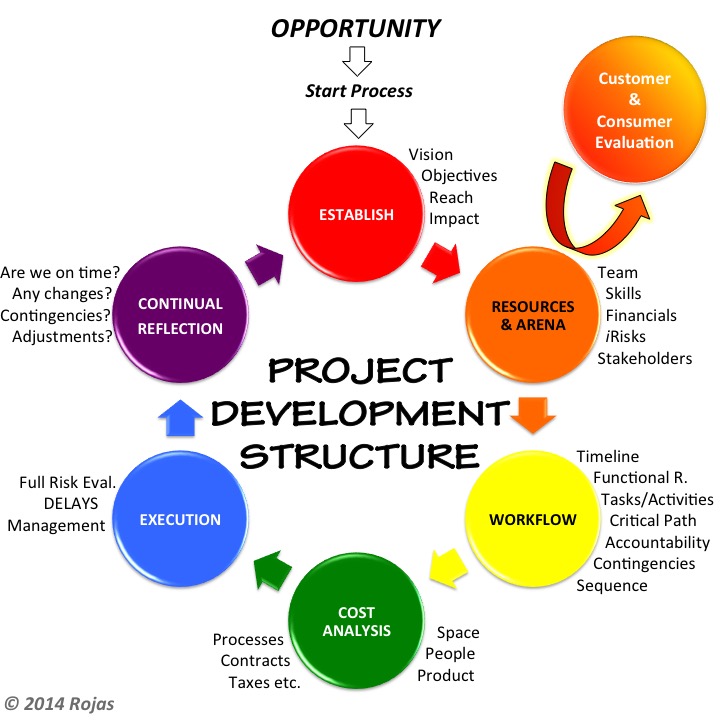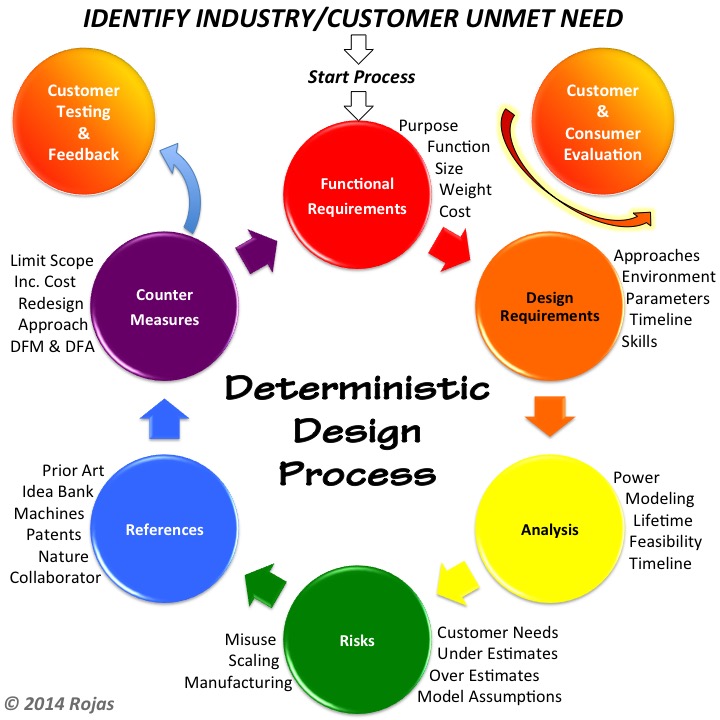Product Design Process
Overview
As the saying goes, we stand on the shoulders of giants. It is overwhelming if we look down because as a society we are literrally reaching for the stars. So let's go into this humbled by the magnitude of the path that has been created up to now. And intrigued by the future of what we can build if we just focus on putting one brick at a time. We don't have to worry about building the whole pyramid in one day. We just have to acquire the skills so we can put the next brick the best we can. That said we should in the process do three things: 1) acknowledge our past, 2) appreciate how our past has shaped our present, and 3) respect the fact that physics and science allows us to move forward. This pyramid is inspired by my stories with Prof. Sam Bowring. Where I first saw geological ternary plots studying radiogenic isotope geology. And in entrepreneurship the three P's: Product, People, and Process. (I have a very long chapter dedicated to the three P in the entrepreneurship book I'm writing based on my experience starting Raptors Design.)
There are many methods and processes to design a product. Diversity is beautiful. The following is just the method that I have put together based on integrating all of my personal experiences. This method materialized in an attempt to explain in a video to college level students how I design/evaluate a product from brainstorming towards commercialization.
Table of Contents
Foundation
Product Development Process
Function
Creativity
Fundamentals
Anticipation
Realization
Prototype Phases
Bench Level Feasibility
Sizing Prototype
Functional Units
Production at Scale
Path for Success
Creating Unicorns
Shackleton: TEAM
Process Synopsis
Foundation
Product Development Process
Function (Functional Requirements)
GOAL
Establish Design Parameters
ACTION: Preliminary Questions
Quantity
Costs
Resources
PLAN: Function
Engineering Req.
Life of Product
Business
Intro: Function
Creativity (Magic Happens Here)
GOAL
Rapid Evaluation & Convergence
Hollistic Phase Evolution
ACTION: Self Reflection
Who am I?
Why am I doing this?
Why is this important?
PLAN: Creativity
Optimize Design Parameters
Create Strategies
Enable Phase Evolution
Intro: Creativity
Fundamentals (Fundamentals of Machine Design & More...)
GOAL
Appropriate Analysis
Plan for Success
ACTION: Focus Most Critical 1st
Energy Methods
Order of Magnitude
Structural loops, etc.
PLAN: Fundamentals
Deterministic Design Process
Big Picture Integration
Patents, Papers, etc.
Video

Anticipation (Risks & Countermeasures)
Summary

Video

Realization
Summary

Video

Prototype Phases
Bench Level (Feasibility)
Fundamentals
...
...
Anticipation
....
....
....
Realization
....
....
....
Video

Sizing Prototype
Fundamentals
...
...
Anticipation
....
....
....
Realization
....
....
....
Video

Functional Units
Fundamentals
...
...
Anticipation
....
....
....
Realization
....
....
....
Video

Production @ Scale
Fundamentals
...
...
Anticipation
....
....
....
Realization
....
....
....
Video

Path for Success
Creating Unicorns: Self Reflection & Vision Forward
I love the hardcore engineering: Diving into the details of structures, math, heat transfer, thermodynamics, fluid analysis, etc. optimizing a complex machine with hardware, software, market etc is a beautiful puzzle. Yet the biggest "challenge" that I have seen and read about extensively as well is: culture & group dynamics. This first video is going to sound like "Fluffy" + "Flowers" + "Fairy Dust." Thus humbly, I would like for us to consider that those three characteristics are also attributes to "unicorns." As my investment friends will clearly point out, and also in Shark Tank (AWESOME Show!) the team, vision, and the dynamics are what make successful companies.
GOAL
People "ISO 9001"
ACTION: Self-Reflection
Path to Success
Integrate Lessons
Establish Vision
PLAN: Evolve
Create Value Structure
Grow Organization
Invest Most Valuable Assest: "People"
Intro: Function

Assemble Shackelton Team
How to assemble the Ernest Shackelton Team?
DARE2MAKE CHALLENGE
Find Your Passion
Invest in Education & Growth
Make Something Amazing
Schedule
- Overview Meche PE
- Product Dev. Process
- Explore → Hands On
- I - Principles
- → Foundation
- → A - Basic Engineering Practices
- → B - Engineering Science and Mechanics
- → C - Material Properties
- → D - Strength of Materials
- → E - Vibration
- II - Applications
- → A - Mechanical Components
- → B - Joints and Fasteners
- → C - Supportive Knowledge
- III - Holistic Knowledge
- → A - Heat Transfer
- → B - Fluid Dynamics
- → C - Controls
- → D - Thermodynamics
- → E - Electronics
- IIII - Precision Machine
- → A - Error Apportionment
- → B - Metrology

